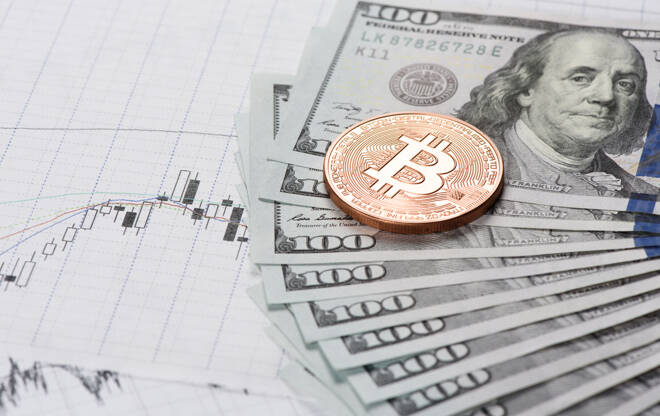Advertisement
Advertisement
Bitcoin’s Inflation Narrative Boosts as USD Losses 97% Value vs BTC
By:
The USD lost 97% of its purchasing power vs Bitcoin in the last 5 years, but as the BTC market matures does the inflation hedge narrative sustain?
The top cryptocurrency’s high ROI vs USD and growing value over the years has strengthened its narrative as an inflation hedge. While Bitcoin’s inflation hedge and store value argument have often been speculated, BTC’s rise against the US Dollar has acted in its defense.
BTC, A Practical Inflation Hedge?
After Bitcoin’s launch more than two decades ago, the coin has attracted a significant number of investors who see the flagship digital currency as a hedge against inflation.
Data from Finbold presented that as of February 15, 2022, the United States Dollar (USD) has lost up to 97.58% of its buying power relative to Bitcoin in the last five years. Thus, when comparing the value of USD to Bitcoin, $1 is now worth just 0.000023 BTC.
Interestingly, after the COVID-19 pandemic, USD’s buying power against BTC fell further taking a major dip in March 2020, followed by another dip towards the end of 2020, as seen above. Furthermore, purchases of Satoshis show that the USD’s value has fallen as a consequence of the government’s continuous money printing.
Additionally, between February 1, 2020, and February 1, 2022, the number of Satoshis that could be purchased with one USD dropped from 10,656 to 2,638, a fall of 75.24%.
Over the last 50 years, inflation has already reduced the value of the USD by 85% which puts BTC as a good alternative to fiat money.
Although issues pertaining to market volatility and the high price of a single BTC unit poses some friction for investors, over the years several alternatives like Bitcoin mining backed ETFs have offered decent exposure to investors of all sorts.
The Digital Gold
Bitcoin, often termed as digital gold has several commonalities with traditional store of value assets like gold.
A 2021 research paper by Sangyup Choi and Junhyeok Shin highlighted that during the recent COVID-19 pandemic, many commonalities shared by Bitcoin and gold raise the question of whether Bitcoin can hedge inflation or provide a safe haven as gold often does.
The paper pointed out that Bitcoin appreciates against inflation or inflation expectation, confirming its inflation-hedging property claimed by investors. However, unlike gold, Bitcoin prices decline in response to financial uncertainty, rejecting the safe-haven quality.
Interestingly, however, BTC prices do not decrease after policy uncertainty shocks, partly consistent with the notion of Bitcoin’s independence from government authorities.
The Crucial Question
That said, whether BTC would continue to outperform traditional assets and fiat money still remains a crucial question. A recent article highlighted how the maturing Bitcoin market has given way to diminishing ROIs over the years.
Furthermore, Bitcoin’s rising correlation with the two major indices—the S&P 500 and Nasdaq could play spoilsport in the coin’s inflation hedge narrative as the market matures.
For now, Bitcoin’s price noted 5% daily gains despite the news of tightening Fed policy expected in March. The global crypto market cap too was heading towards the $2 trillion mark standing at $1.99 trillion, with a 4.46% increase over the last day.
About the Author
Varuni Trivediauthor
A Journalism post-graduate with a keen interest in emerging markets across South East Asia, Varuni’s interest lies in the Blockchain technology. As a financial journalist, she covers metric and data-driven stories with a tinge of commentary, and strongly believes in HODLing.
Did you find this article useful?
Latest news and analysis
Advertisement
